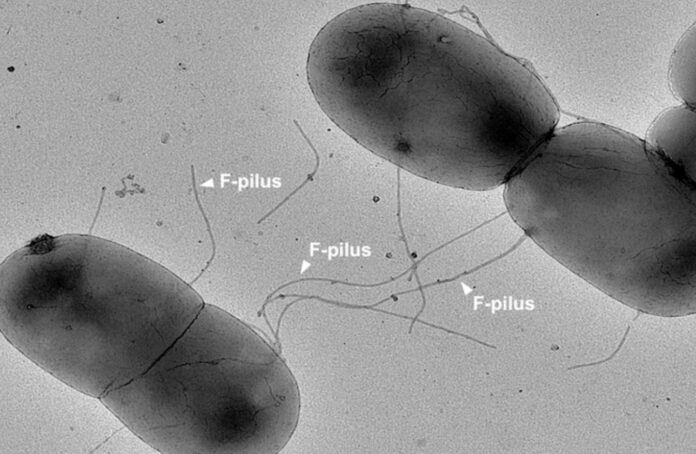Scientists have found that gut bacteria have developed a defense mechanism against antibiotics by using super-polymers. This discovery sheds light on the challenges faced in combating drug-resistant bacteria, but also presents a potential solution to the problem. The complex super-polymer structures used by bacteria to transfer genes through their extracellular appendages, known as F-pili, may have practical applications in targeted drug delivery for future medical treatments.
Previously, it was believed that the harsh conditions within the gut, such as turbulence, heat, and acidity, would render F-pili ineffective, making the transfer of genes more challenging. However, this recent discovery highlights the incredible adaptability of gut bacteria and their ability to develop sophisticated mechanisms to overcome such obstacles.
Recent research conducted by a team of scientists from Imperial College London has revealed that F-pili, which are hair-like appendages on the surface of bacteria, actually become stronger in certain conditions. This increased strength aids in the more efficient transfer of resistance genes between bacteria, as well as the formation of biofilms – protective bacterial communities that help to resist antibiotics. The study’s findings have been published in the journal Nature Communications.
Jonasz Patkowski, the first author of the study and a member of the Department of Life Sciences at Imperial, says “The death toll from antimicrobial resistance is expected to match cancer by 2050, meaning we urgently need new strategies to combat this trend. Much of the spread of resistance is driven by bacteria swapping genes, so detailed understanding of this process could lead to new ways to interrupt it.”
Bacteria use different types of pili to transfer genes through conjugation. However, it was previously thought that this process was fragile and easily interrupted by agitation. This raised the question of why bacteria, especially those living in harsh conditions like the gut, still use these systems. To investigate this, a team conducted experiments on E. coli bacteria using F-pili during conjugation while subjecting them to agitation. Surprisingly, they found that agitation actually increased the efficiency of gene transfer between bacteria. They also observed that the conjugated bacteria, when subjected to agitation, tended to clump together more easily to form biofilms that protect the inner bacteria from surrounding antibiotic molecules.
In order to understand the mechanism by which F-pili accomplish their functions, they conducted a series of experiments. They utilized a strength test method, whereby they attached a glass bead to the end of an F-pilus using ‘molecular tweezers’, and pulled on it while the bacterium was mounted on a stage. These experiments revealed that the F-pili possess remarkable elasticity, akin to a spring, which enables them to avoid breaking under stress.
The researchers also examined the F-pili’s ability to endure several common gut conditions. They exposed them to high temperatures of 100°C, sodium hydroxide, and urea, and the F-pili displayed impressive resilience by surviving all these challenging conditions.
The research team delved deeper into the study of F-pili by examining them on a molecular level to gain insight into their exceptional properties. These structures consist primarily of F-pilin subunits that are connected by phospholipid molecules. To understand the role of phospholipids in conferring springiness and elastic strength to the F-pili structure, the researchers conducted simulations by removing the phospholipids. The results showed that the presence of phospholipids is crucial for maintaining the structural integrity of F-pili. The team also conducted a pulling experiment, which revealed that the subunits quickly disassembled without the support of phospholipids. This finding underscores the importance of phospholipids in acting as a molecular glue in the formation of long biopolymers.
“Making F-pili,” as explained by lead researcher Dr. Tiago Costa, “is very costly to the bacteria in terms of resources and energy, so it’s no surprise they are worth the effort.
“We have shown how F-pili accelerate the spread of antibiotic resistance and biofilm formation in turbulent environments, but the challenge now is to find ways to combat this very efficient process.”
Although breaking F-pili in pathogenic bacteria would have advantages, these structures could prove beneficial if we engineer them for drug delivery purposes.
“It’s hard to find a tubular appendage with such strong properties,” adds Patkowski.
“Bacteria use it to transfer genes, but if we could mimic these properties, we could use similar structures to precisely deliver drugs where they are needed in the body.”
Image Credit: Jonasz Patkowski
